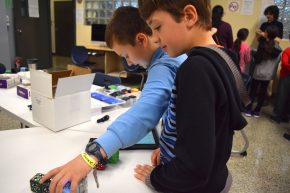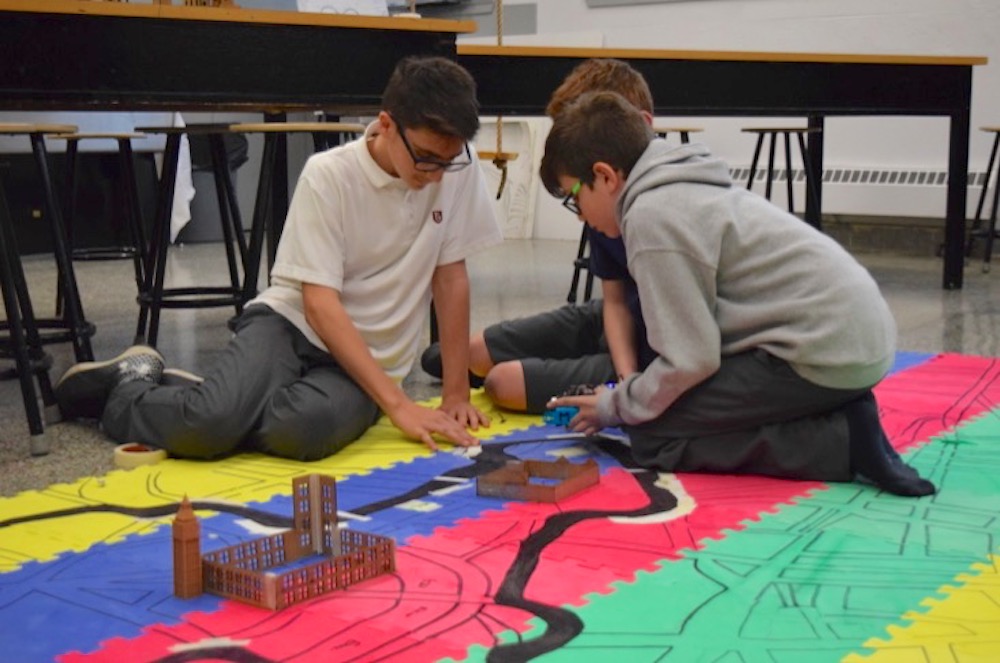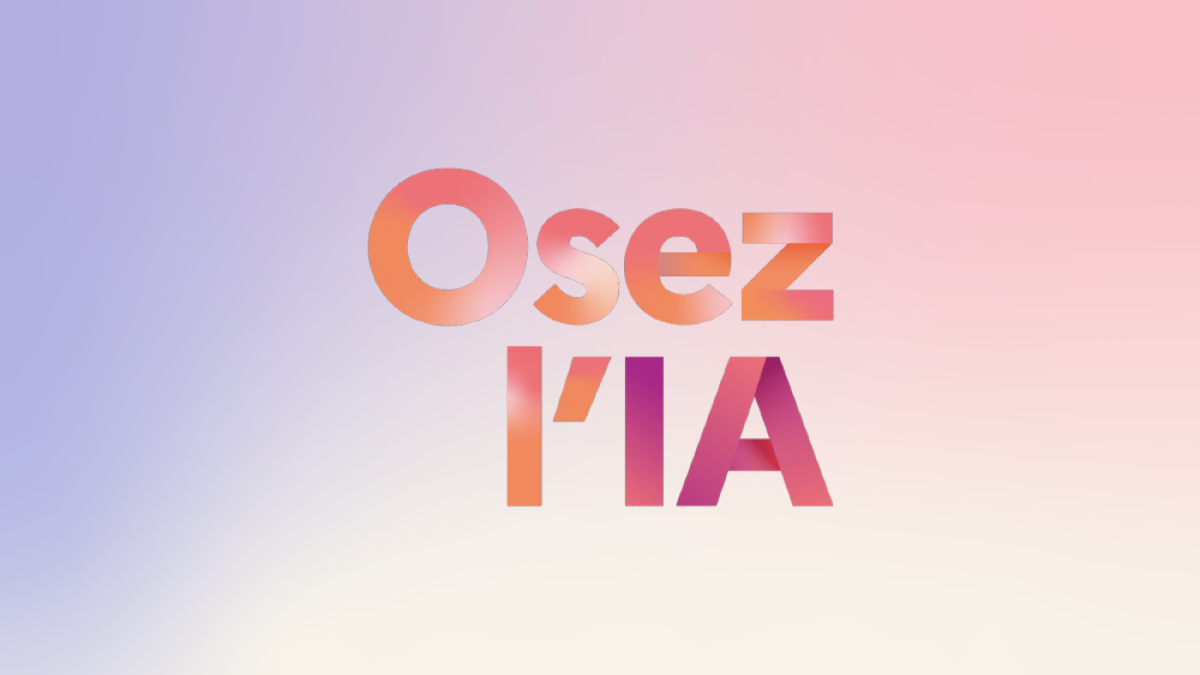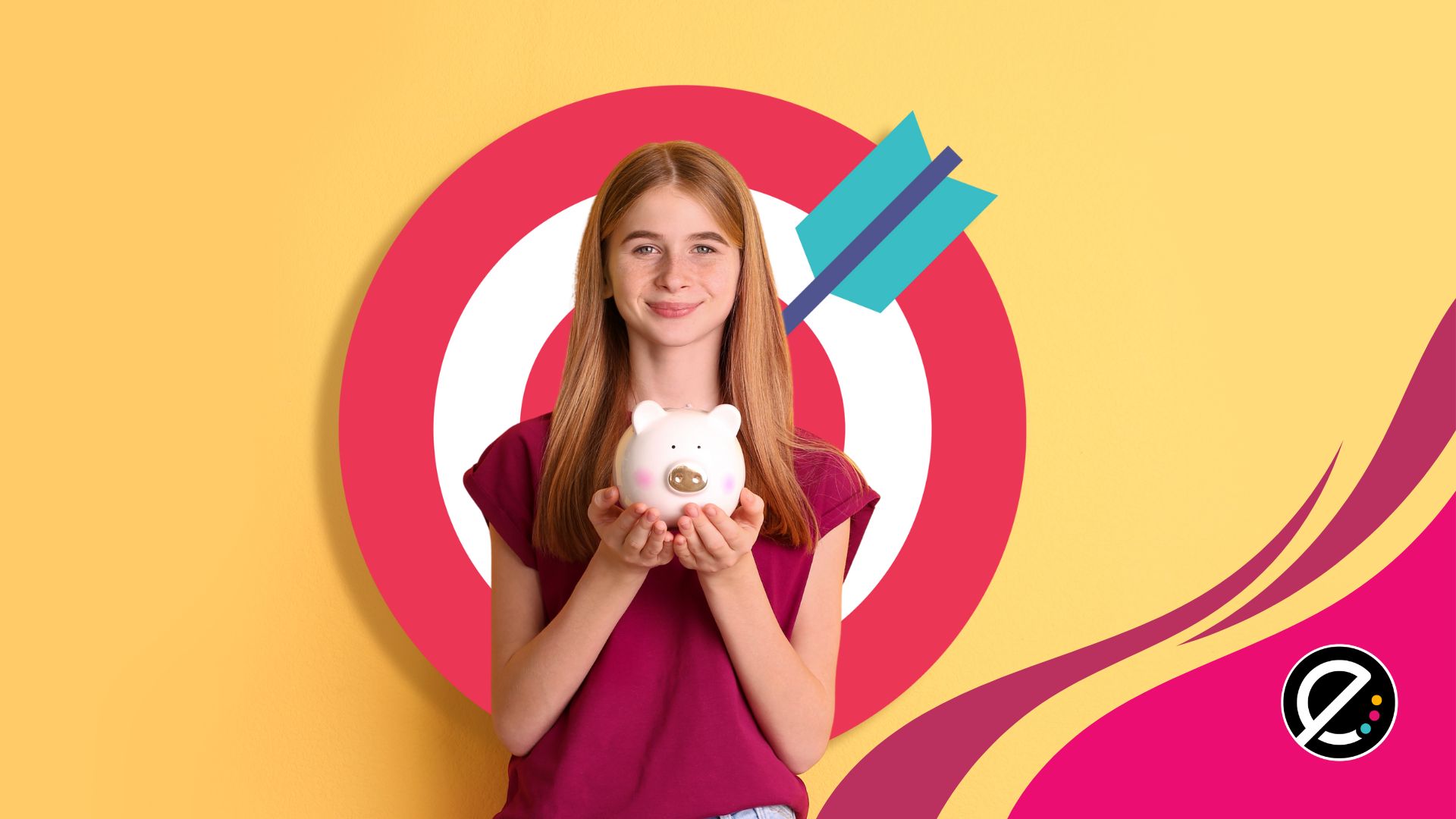Des élèves qui recréent des éléments d’une ville en travaillant les maths, l’univers social et la programmation, appuyés par le numérique : c’est #SmartCityMaker.
Lors du dernier Sommet de l’iPad et du numérique en éducation, Raoul Kamga et Jean-Nicolas Proulx, auxiliaires de recherche du projet #CoCreaTIC, dirigé par Margarida Romero à la Faculté des sciences de l’éducation de l’Université Laval, ont offert une courte présentation du projet #SmartCityMaker, qui a pour but d’initier les 8 à 12 ans environ à la pensée informatique, à la programmation et à la robotique. Quelques écoles du Québec participent à ce projet, dont quatre classes du Collège Beaubois, à Montréal.
Nous avons eu l’occasion de discuter l’an dernier avec des élèves du Collège Beaubois à l’occasion d’une journée portes ouvertes de la Fabrique Beaubois, l’atelier de fabrication numérique (makerspace) de l’établissement. Ils nous ont expliqué comment ils ont participé à ce projet.
Collaboration, créativité et interdisciplinarité
Les enseignants ont d’abord assigné une ville différente à chaque classe : Rome, Paris, New York, Londres. C’est l’enseignant qui a imprimé les cartes de ces villes sur une feuille de papier format légal, distribuée aux élèves. Les cartes ont été séparées en sections, et chaque équipe de 4 élèves s’est vue assigner une section de la ville.

Les équipes ont transféré à l’échelle les rues dont ils avaient la charge sur des pièces de tapis juxtaposables en mousse. Puis, chaque équipe a choisi un bâtiment caractéristique du quartier qui leur a été assigné. Les élèves qui nous ont montré leur travail devaient reproduire une copie du pont de Londres à l’échelle. À l’aide du logiciel InkScape, un logiciel libre multiplateforme installé sur les ordinateurs de la Fabrique Beaubois, les élèves ont dessiné les parties de l’édifice à reproduire. Ils ont ensuite transféré les spécificités à la découpeuse laser installée dans cet atelier de fabrication numérique, qui en a découpé les parties sur des planchettes de bois. Les élèves ont ensuite pu coller les pièces pour construire la réplique de l’édifice.
La prochaine étape a été la programmation des robots qui devaient circuler dans la ville. C’est le logiciel de programmation Scratch qui a été utilisé pour ce faire. Lors de la démonstration à laquelle j’ai assisté, c’est le robot éducatif et programmable mBot v.1.1 de Makeblock qui était utilisé par les élèves. Ce robot, basé sur une plateforme Arduino, muni de capteurs, a offert aux élèves une véritable expérience de programmation, d’initiation à l’électronique et à la robotique.
La culture Maker : une nouvelle ère d’industrialisation
C’est M. Michel Choquette, enseignant d’univers social, qui accompagne les élèves dans ce projet, par lequel ils apprennent des notions de mathématique et de programmation, mais développent aussi des compétences de collaboration et de créativité dans le cadre du programme d’univers social. Un bel exemple d’interdisciplinarité!
Pour Ann-Louise Davidson, professeure à l’université Concordia, les technologies numériques ne sont pas seulement des outils de communication ou de divertissement. Selon cette chercheuse, la culture Maker permet de rendre les apprentissages concrets.
Selon elle, nous vivons d’ailleurs présentement un certain « Far West » de la culture Maker, le début d’une ère nouvelle. Il s’agit d’une forme d’industrialisation à laquelle tous peuvent participer. « Hacker » est une façon alternative de résoudre des problèmes et de s’exercer à vivre ensemble. On y apprend entre autres à ne pas se laisser intimider par ses erreurs. Elle estime qu’il s’agit d’un phénomène qui dépasse les apprentissages technologiques pour atteindre l’innovation sociale.
Pour en savoir plus sur la culture Maker et la vivre, l’universitaire lance l’invitation aux événements MakerJam de MilieuxMake Workshop Series, de l’Université Concordia à Montréal.






